Ankle Arthritis
Updated:
(Also known as Ankle Osteoarthritis, Osteoarthritis of the Ankle, Arthritis of the Ankle, Degeneration of the Ankle)
N.B. The term ‘ankle arthritis’ will be used in this document to describe the condition known as ankle osteoarthritis.
What is ankle arthritis?
Ankle arthritis is a condition characterized by a degenerative process involving gradual wear and tear to the cartilage and bone surfaces of the ankle joint with subsequent inflammation. Ankle arthritis may occur following a specific injury or, more commonly, due to repetitive forces going through the ankle joint beyond what it can withstand over a period of time.
The ankle joint is formed by the articulation of the tibia, fibula and talus bones (figure 1). In a normal ankle, joint surfaces are smooth and there is cartilage between the bone ends which allows for efficient shock absorption and smooth movement.
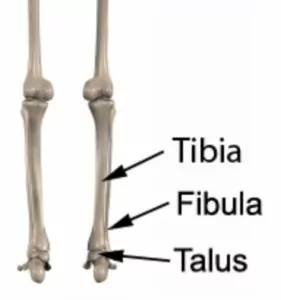
When the ankle joint is damaged or overloaded, particularly with excessive weight-bearing or twisting forces, degeneration of the cartilage can occur, reducing the ankle’s shock absorbing capacity. As the condition progresses, and the cartilage wears away, the joint space can narrow and there is eventual wearing down of the bone ends so that the surfaces are no longer smooth. The bone ends may also develop small bony processes (spurs) called ‘osteophytes’. When some or all of these changes occur, the condition is known as ankle arthritis.
Arthritis of the ankle usually occurs in patients greater than 40 years of age and tends to affect females more frequently than males. It is more common in those patients who are overweight or have a past history of injury, surgery or trauma to the ankle.
Causes of ankle arthritis
Ankle arthritis most commonly occurs due to repetitive or prolonged forces going through the ankle joint beyond what it can withstand over a period of time, particularly in older patients (> 40 years of age). This typically occurs due to excessive weight bearing or twisting activities, such as prolonged walking or running (especially up or down hills or on uneven terrain), repetitive jumping and landing activities, repetitive or prolonged lifting or carrying or change of direction sports. Occasionally, patients may develop the condition following a traumatic injury to the ankle, such as an ankle sprain (particularly involving significant weight bearing forces), a traumatic landing from a height, motor vehicle accident or following ankle surgery. It may also be more common in those with a poorly rehabilitated ankle injury or in patients with poor foot biomechanics or inappropriate footwear.
Signs and symptoms of ankle arthritis
Patients withthis conditionusually experience symptoms that develop gradually over time. In patients with minor cases of ankle arthritis, little or no symptoms may be present. As the condition progresses, there may be increasing ankle pain with weight bearing activity and joint stiffness (particularly after rest or first thing in the morning). Swelling, decreased flexibility, severe joint pain, pain at night and a grinding, clicking or locking sensation during certain movements may also be experienced. Symptoms can sometimes fluctuate from month to month with patients reporting an increase in symptoms with colder weather. In more severe cases, muscle wasting (especially of the calf), a visible deformity of the ankle joint, and a limp may also be present.
Diagnosis of ankle arthritis
A thorough subjective and objective examination from a physiotherapist may be sufficient to diagnose ankle arthritis. An X-ray is usually required to confirm diagnosis and may demonstrate signs of decreased joint space, irregularities of the bony ends and/or the presence of bony spurs (osteophytes). Sometimes an MRI or CT scan may also be indicated to assist with diagnosis and rule out other pathologies.
Treatment for ankle arthritis

Members Only ContentBecome a PhysioAdvisor Member to gain full access to this exclusive content. For more details see Become a Member. Already a member? Login Now
Prognosis of ankle arthritis
Because ankle arthritis is a progressive condition, complete resolution of symptoms is often not possible. However, in mild to moderate cases, most patients, if managed well, can maintain an active lifestyle with little or no symptoms and delay or prevent the deterioration of the condition. In severe cases that have been unresponsive to appropriate physiotherapy management and where quality of life is significantly affected, ankle joint surgery may be indicated.
Physiotherapy for ankle arthritis
Physiotherapy treatment for patients with this condition is vital to delay ankle joint deterioration, reduce symptoms, and improve strength, range of movement, balance and function. Treatment may comprise:
- exercises to improve strength, flexibility, core stability and balance
- hydrotherapy
- soft tissue massage
- joint mobilization
- dry needling
- electrotherapy (e.g. ultrasound)
- ankle taping
- the use of an ankle brace or compression bandage
- ice or heat treatment
- education
- the use of a walking stick, crutches or other walking aid
- activity and lifestyle modification advice
- biomechanical correction
- prescription of orthotics or appropriate footwear advice
- anti-inflammatory and supplement advice (e.g. fish oil, glucosamine and chondroitin)
- weight loss advice where appropriate
Contributing factors to the development of ankle arthritis
There are several factors that may contribute to the development of this condition. These factors need to be assessed and corrected (where possible) with direction from a physiotherapist and may include:
- a history of ankle trauma, surgery or injury
- age (> 40 years)
- muscle weakness (particularly of the calf, peroneals, quadriceps and gluteals)
- muscle tightness (e.g. calf)
- poor core stability or balance
- being overweight
- poor nutrition or inappropriate diet
- a sedentary lifestyle
- stiffness in other joints (e.g. the knee or hip)
- poor foot posture (e.g. flat feet)
- inappropriate footwear
- leg length discrepancy or postural abnormalities of the lower limb
- excessive weight bearing or twisting activities
- inadequate recovery periods from activity
Other intervention for ankle arthritis
Despite appropriate physiotherapy management, some patients with arthritis of the ankle continue to deteriorate. When this occurs, other intervention may be required. This may include pharmaceutical intervention, corticosteroid injection, the use of supplements such as fish oil, glucosamine and chondroitin, investigations such as an X-ray, CT scan, bone scan or MRI, or assessment from a specialist.
In more advanced cases of ankle arthritis, where symptoms are severe and quality of life severely affected, patients may require surgical intervention. This may involve ankle arthroscopy, ankle fusion or ankle joint replacement surgery. The treating physiotherapist or doctor can advise if this may be required and will refer to an orthopaedic specialist for an assessment and opinion.
Exercises for ankle arthritis
The following exercises are commonly prescribed to patients with arthritis of the ankle. You should discuss the suitability of these exercises with your physiotherapist prior to beginning them. Generally, they should be performed 2-3 times daily once the physiotherapist has indicated it is safe to do so and only provided they do not cause or increase symptoms.
Your physiotherapist can advise when it is appropriate to begin the initial exercises and eventually progress to the intermediate and advanced exercises. As a general rule, addition of exercises or progression to more advanced exercises should take place provided there is no increase in symptoms.
Initial Exercises
Foot and Ankle Up and Down
Move your foot and ankle up and down as far as you can go without pain and provided you feel no more than a mild to moderate stretch (figure 2). Repeat 10 – 20 times provided the exercise is pain free.
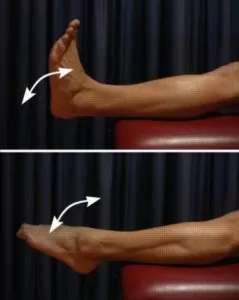
Foot and Ankle In and Out
Move your foot and ankle in and out as far as you can go without pain and provided you feel no more than a mild to moderate stretch (Figure 3). Repeat 10 – 20 times provided the exercise is pain free.
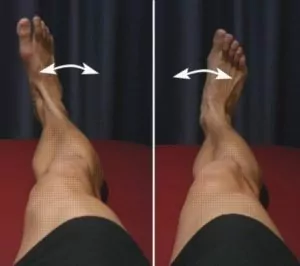
Calf Stretch with Towel
Begin this stretch in long sitting with your leg to be stretched in front of you. Your knee and back should be straight and a towel placed around your foot as demonstrated (figure 4). Using your foot, ankle and the towel, bring your toes towards your head as far as you can go without pain and provided you feel no more than a mild to moderate stretch in the back of your calf, Achilles tendon or front of your ankle. Hold for 5 seconds and repeat 10 times at a mild to moderate stretch provided the exercise is pain free.

Intermediate Exercises

Members Only ContentBecome a PhysioAdvisor Member to gain full access to this exclusive content. For more details see Become a Member. Already a member? Login Now
Advanced Exercises

Members Only ContentBecome a PhysioAdvisor Member to gain full access to this exclusive content. For more details see Become a Member. Already a member? Login Now
Other Exercises

Members Only ContentBecome a PhysioAdvisor Member to gain full access to this exclusive content. For more details see Become a Member. Already a member? Login Now
Rehabilitation Protocol for ankle arthritis

Members Only ContentBecome a PhysioAdvisor Member to gain full access to this exclusive content. For more details see Become a Member. Already a member? Login Now
 Physiotherapy products for ankle arthritis
Physiotherapy products for ankle arthritis
Some of the most commonly recommended products by physiotherapists for patients with this condition include:
-
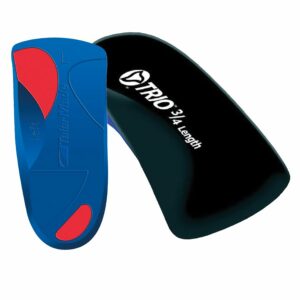 Talar Made TRIO Orthotics (3/4 length)
Talar Made TRIO Orthotics (3/4 length) -
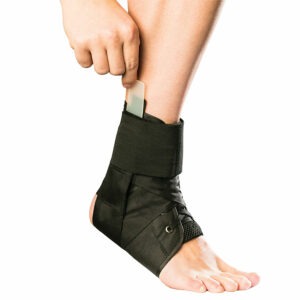 AllCare Ortho Total Ankle Brace (AOA19)
AllCare Ortho Total Ankle Brace (AOA19) -
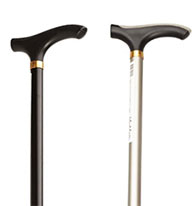 Aluminium Adjustable Walking Stick
Aluminium Adjustable Walking Stick -
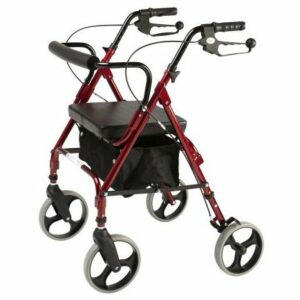 Alpha 418 Rollator Mobility 4 Wheel Walker
Alpha 418 Rollator Mobility 4 Wheel Walker -
 Forearm Crutches Adjustable – Standard Grip
Forearm Crutches Adjustable – Standard Grip -
 AllCare Tubing
AllCare Tubing -
 AllCare Spikey Massage Ball
AllCare Spikey Massage Ball -
 AllCare Instant Cold Pack (15 x 25cm)
AllCare Instant Cold Pack (15 x 25cm) -
 AllCare Foam Roller Round
AllCare Foam Roller Round -
 Tubigrip
Tubigrip -
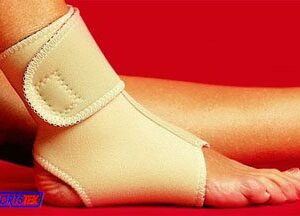 Thermoskin Heat Retaining Ankle Wrap
Thermoskin Heat Retaining Ankle Wrap
To purchase physiotherapy products for ankle arthritis, click on one of the above links or visit the PhysioAdvisor Shop.
 Find a Physio
Find a Physio
Find a physiotherapist in your local area who can treat this condition.
 More Exercises
More Exercises
- Ankle Stretches.
- Ankle Strengthening Exercises.
- Balance Exercises.
- Leg Stretches.
- Leg Strengthening Exercises.
- Cardiovascular Exercise.
- Lower Body Machine Weights
- Massage Ball Exercises
- Foam Roller Exercises
- Core Stability Exercises
 Recommended Reading
Recommended Reading
- How to use Crutches
- Ice or Heat?
- The R.I.C.E. Regime
- Choosing a Shoe
- Do I Need Orthotics?
- Ankle Taping
- Achilles Tendon Taping
- Arch Support Taping
- Return to Running Program
- Return to Sport
- Ankle Diagnosis Guide
Become a PhysioAdvisor Member
-
 Individual Membership (12 Months)$59.95 for 1 year
Individual Membership (12 Months)$59.95 for 1 year -
 Individual Membership (3 Months)$39.95 for 3 months
Individual Membership (3 Months)$39.95 for 3 months -
 Individual Membership (Yearly)$49.95 / year
Individual Membership (Yearly)$49.95 / year -
 Individual Membership (Monthly)$15.95 / month
Individual Membership (Monthly)$15.95 / month

Link to this Page
If you would like to link to this article on your website, simply copy the code below and add it to your page:
<a href="https://physioadvisor.com.au/injuries/ankle/ankle-arthritis”>Ankle Arthritis – PhysioAdvisor.com</a><br/>PhysioAdvisor offers detailed physiotherapy information on ankle arthritis including: causes, signs and symptoms, diagnosis, treatment, exercises, rehabilitation protocol, physiotherapy products and more...
Return to the top of Ankle Arthritis.
